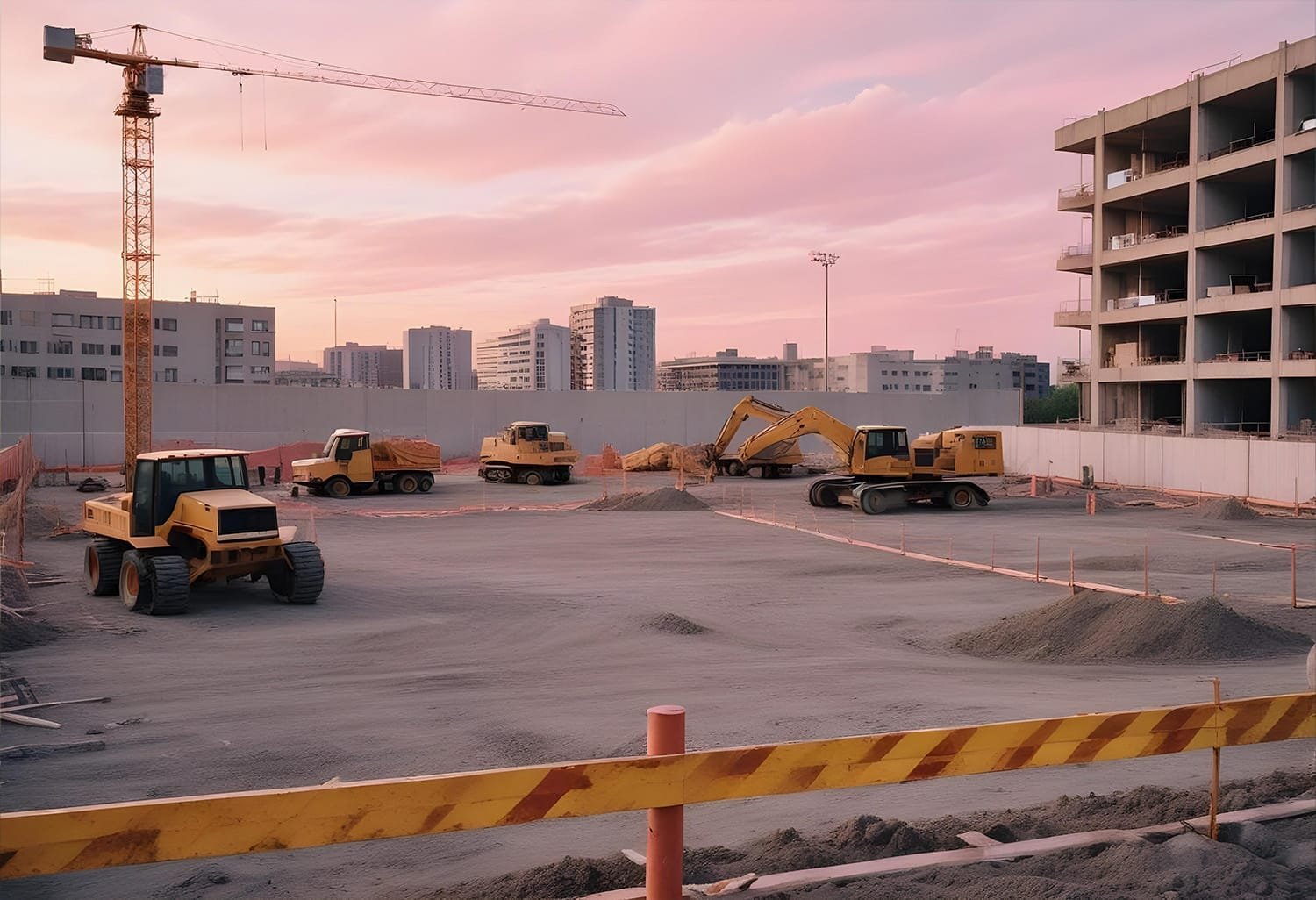Climate change is transforming the way we design and build structures, forcing the construction industry to rethink material selection, energy efficiency, and long-term sustainability. As global temperatures rise, extreme weather events become more frequent, and resource availability fluctuates, selecting the right building materials is more critical than ever.
At VMC Group, we are committed to using climate-resilient materials that enhance durability, energy efficiency, and environmental sustainability. This article explores how climate change is impacting construction material choices and what builders can do to create structures that withstand the challenges of a changing world.
How Climate Change Affects Building Materials
Climate change has a profound impact on construction materials in several ways, including:
- Increased Temperatures: Rising heat levels can cause materials like asphalt and traditional concrete to degrade faster.
- Extreme Weather Events: Hurricanes, floods, and wildfires require materials that can withstand intense environmental stress.
- Rising Sea Levels: Coastal buildings need materials that resist saltwater corrosion and moisture damage.
- Carbon Footprint Reduction: The demand for low-carbon and carbon-neutral materials is growing to combat climate change.
Key Climate-Resilient Materials for Construction
1. High-Performance Concrete
Why It’s Essential: Traditional concrete has a high carbon footprint and is vulnerable to cracking due to heat expansion and freeze-thaw cycles. Modern alternatives improve durability, sustainability, and resilience.
Best Innovations:
- CarbonCure Concrete: Captures and stores CO₂ within the concrete mix, reducing emissions.
- Self-Healing Concrete: Uses bacteria or chemical agents to repair cracks automatically.
- Permeable Concrete: Reduces flood risks by allowing water to seep through its surface.
2. Cool Roofing and Reflective Materials
Why It’s Essential: Heatwaves and rising temperatures make cool roofs and reflective materials critical for reducing heat absorption and improving energy efficiency.
Best Innovations:
- Solar Reflective Coatings: Reduce surface temperatures and lower cooling costs.
- Green Roof Systems: Use vegetation to absorb heat and improve insulation.
- Metal Roofing with Cool Pigments: Reflects sunlight while maintaining durability.
3. Cross-Laminated Timber (CLT) and Engineered Wood
Why It’s Essential: Sustainable wood products help lower the carbon footprint of construction while providing structural strength.
Best Innovations:
- Cross-Laminated Timber (CLT): Provides a renewable alternative to steel and concrete.
- Bamboo Panels: Grow quickly and absorb high amounts of CO₂.
- Reclaimed Wood: Reduces deforestation and promotes recycling.
4. Flood-Resistant and Moisture-Resistant Materials
Why It’s Essential: With more frequent storms and rising sea levels, buildings must be constructed with materials that resist flood damage, mold growth, and water infiltration.
Best Innovations:
- Waterproof Concrete: Designed to repel moisture and prevent cracking.
- Fiber Cement Siding: Resistant to water, rot, and termites.
- Elevated Foundations: Incorporating water-resistant materials to prevent flood damage.
5. Fire-Resistant Building Materials
Why It’s Essential: Wildfires are becoming more common, necessitating the use of fire-resistant materials in high-risk areas.
Best Innovations:
- Fire-Rated Glass: Withstands high temperatures without breaking.
- Concrete and Masonry Walls: Provide excellent fire resistance.
- Intumescent Coatings: Expand when exposed to heat, protecting underlying structures.
6. Sustainable and Low-Carbon Materials
Why It’s Essential: Reducing emissions in construction is crucial to combat climate change. Eco-friendly materials help lower environmental impact while maintaining high performance.
Best Innovations:
- Hempcrete: A lightweight, breathable, and carbon-negative building material.
- Mycelium Bricks: Made from fungi, these bricks are biodegradable and fire-resistant.
- Recycled Steel and Aluminum: Reduces the need for energy-intensive mining and manufacturing.
7. Smart and Adaptive Materials
Why It’s Essential: Climate change creates unpredictable conditions. Smart materials can adapt to environmental changes, improving performance and sustainability.
Best Innovations:
- Electrochromic Glass: Adjusts transparency to control heat gain and glare.
- Phase-Change Materials (PCMs): Store and release heat to maintain indoor comfort.
- Self-Cleaning Surfaces: Reduce maintenance costs and water usage.
How to Choose Climate-Resilient Materials for Your Project
When selecting materials for climate adaptation, consider the following:
- Local Climate Conditions: Choose materials suited to regional weather patterns (e.g., flood-resistant materials in coastal areas).
- Energy Performance: Prioritize insulation, reflectivity, and passive cooling features.
- Durability and Maintenance: Invest in materials with long lifespans to reduce replacements.
- Carbon Footprint: Opt for materials with lower embodied carbon and sustainable sourcing.
Final Thoughts: Building for a Climate-Resilient Future
As climate change continues to shape the construction industry, material selection is more important than ever. By choosing sustainable, durable, and weather-resistant materials, builders can create structures that not only withstand environmental challenges but also contribute to a greener future.
At VMC Group, we are committed to helping clients integrate climate-smart materials into their projects, ensuring longevity, energy efficiency, and sustainability. If you’re planning a construction project and want to future-proof it against climate change, contact us today for expert guidance!



